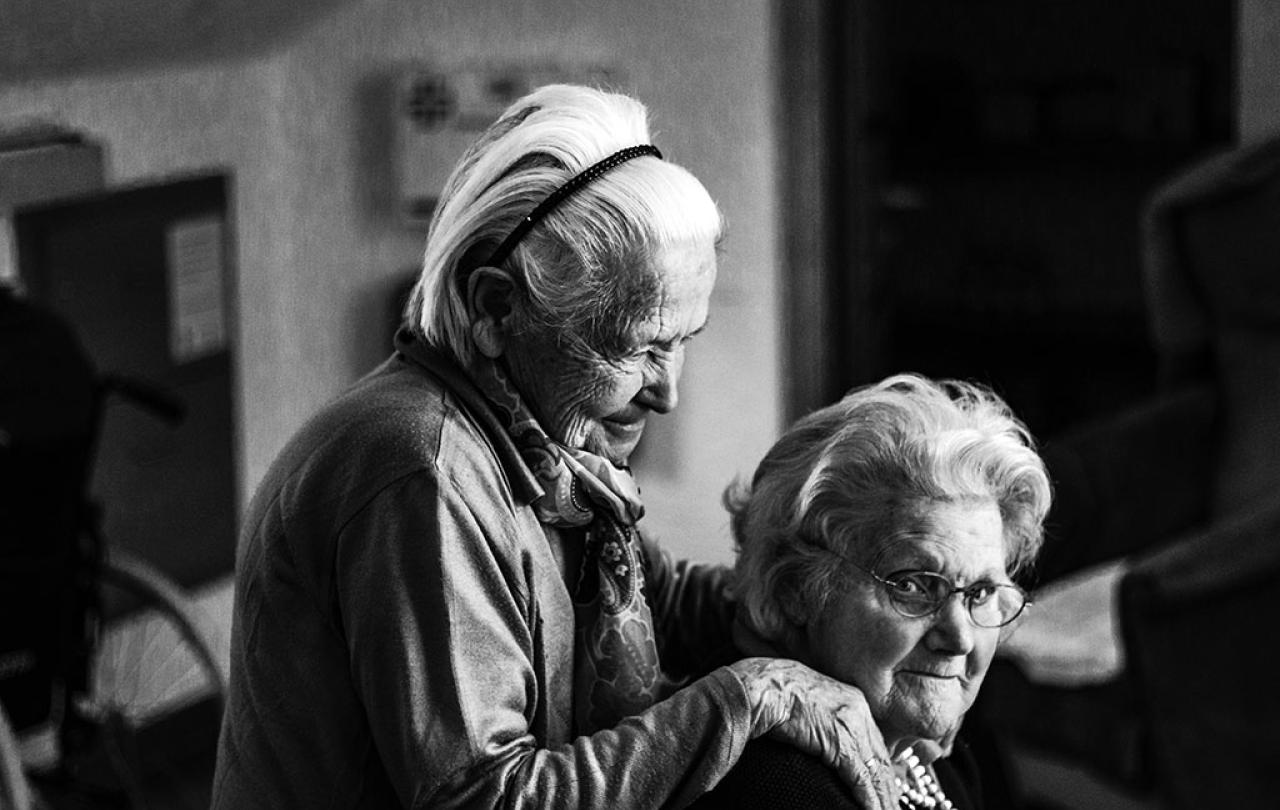
Reviewing Canada’s legislation on assisted dying, one article raises the concern: “Does it make dying with dignity easier than living with dignity?” This insightful question cuts to the centre of the debate: dignity. Or more particularly, the unwitting conflation of dignity with independence, and of independence with autonomy.
As Jersey becomes the first place in the British Isles to begin the process of legalising assisted dying, I feel that we should listen carefully as to how and where these terms are being used, both in the formal debate, and in the commentary that surrounds it. The States Assembly in Jersey voted to allow the development of assisted dying legislation for those with six months to live (or twelve months if their condition is neurodegenerative). A second vote to make assisted dying available more broadly to those who experience conditions that entail “unbearable suffering” was defeated by a narrower margin. Reading the flurry of press releases that followed the vote, these keywords, autonomy, independence, and dignity, are everywhere. But are we really thinking about what these words communicate?
People in positions of wealth and power have more independence and autonomy, more choices and freedoms, but it is we who ascribe dignity to those in that position.
The word dignity comes from the Latin word dignus, meaning ‘worthy’, and this is still the primary definition given to the English word dignity today. The OED dictionary has it as “the quality of being worthy or honourable”, immediately followed by reference to “honourable or high estate”. If this is so, then dignity is not something that can be bought, nor assumed – it is a status conferred upon someone by the esteem in which other people hold them. The haughtiest person in the world can still be esteemed undignified, as can the richest. Moreover, the opposite is also true: we are never prevented from conferring dignity upon, and esteeming the worthiness of, those who live the humblest of lives.
And yet, if we are honest with ourselves – do many of us not quietly associate the idea of becoming rich and powerful with becoming dignified? Do we not tend to assume the worthiness of those in high office – at least until we meet them and realise pretty quickly that they all put their trousers on one leg at a time, the same as the rest of us. This association happens because we have such a tendency to conflate dignity with independence (the ability to live without assistance from others) and autonomy (the ability to make one’s own decisions, and not have those decisions limited or interfered with). People in positions of wealth and power have more independence and autonomy, more choices and freedoms, but it is we who ascribe dignity to those in that position. It is society who sees the autonomy of those in high status, and esteems it as dignified.
Does this not unwittingly suggest that choosing to live in a state of extreme dependence on palliative care is, by implication, undignified?
Repeatedly ancient wisdom, in the Bible, warns us not to assume that dignity comes with the freedom of wealth or power. All the great ‘heroes’ of that book suffer their indignities. Fresh from the success of his Ark project, Noah gets drunk and exposes himself. Elated from a victory against an enemy, King David dances half-naked through the streets. These are just two examples of the catalogue of embarrassments and mishaps that beset nearly all the kings and leaders whose stories are told as part of the Christian story. One after another, they stumble and struggle with life and leadership. The apostle Paul explains that this is because God uses the foolish things of this world to shame human pride, “for even the foolishness of God is still wiser than human wisdom.” Therefore, Paul argues, God chooses to speak to us through the weak and the lowly things and people of this world. Never was this demonstrated so clearly as when Jesus was born in a draughty stable, lived a life of poverty, and died a criminal’s death on a cross.
But what has all this to do with the debate over assisted dying? Well, I am struck by how often the idea of losing one’s independence (through disabling or terminal illness) is conflated with losing one’s dignity, and so dying through personal choice (autonomy) is presented as regaining it. One campaign group that speaks to this debate even calls itself ‘Dignity in Dying’ – but does this not unwittingly suggest that choosing to live in a state of extreme dependence on palliative care is, by implication, undignified?
Independence is not possible for everybody, or not possible to the same degree. And dignity? Well, dignity is possible for anyone.
The Dean of Jersey, the Very Reverend Mike Keirle, has spoken of his concern that the change in legislation will make vulnerable people feel pressured to end their lives. Examples from Canada, where physician assisted dying is already available, show that his concern is not unfounded. In 2022, Canadian veteran and Paralympian Christine Gauthier phoned her caseworker to chase up the over-due installation of her new wheelchair ramp. She then describes how she was horrified to find herself being advised to consider assisted dying instead.
"It is remotely just what they're doing,” says Gauthier, “exhausting us to the point of no return. […] I was like, 'Are you serious?' Like that easy, you're going to be helping me to die but you won't help me to live?"
Gauthier is not alone – she spoke out when she learned that four other Canadian veterans had reported similar experiences. In these unhappy moments, one can see how dangerous the assumption can be – the assumption that no one would want to live a life of needing help. Here are disabled people who do want to live, and this assumption, this careless conflation of independence, autonomy, and dignity, leaves them fighting for their right to do so. Why should anyone have to fight or even speak for their right not to commit suicide? It is little wonder that disabled actress, Liz Carr, describes assisted dying legislation as “terrifying” for disabled people.
I respect that there are terminally ill people, and those who love them, who speak from a desire to end their suffering; it is clear that people on all sides of the debate need to have this difficult and emotionally charged conversation. But whatever the eventual outcome in terms of legislation, we must be careful that it is not based on careless assumptions, or on the conflation of one thing with an entirely different other. Independence is not possible for everybody, or not possible to the same degree. And dignity? Well, dignity is possible for anyone – it is a state that can be conferred whenever, and upon whomever society chooses to confer it. Autonomy is the matter in question – we are talking about autonomy in dying. And whatever happens, we should by no means legislate in a way that leaves disabled people esteemed unworthy, left open to the indignity of fighting for their right to live.





